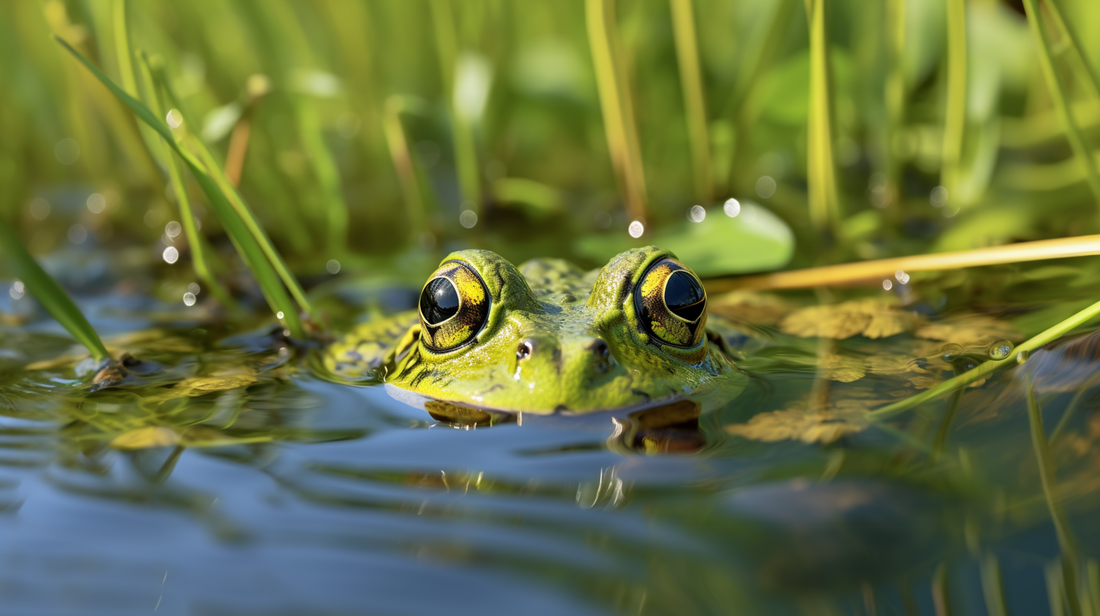Do you have invasive pond weeds in your home pond or water feature? Certain pond weed types can take over a body of water, depleting the nutrients for the fish and other plants and organisms that share the water.
Keeping control of aggressive pond weeds can be a challenge, but with the right information it’s possible to regain control of your garden pond or lake. In this article, we take a look at the most important common pond weeds to look out for and go over how to manage them.
Pond weeds Identification by Type
Identifying invasive weeds in your pond can be difficult if you don’t know what you are looking for. Here is a list of the different types of pondweed commonly found in ponds and lakes:
What are the Most Invasive Pond Weeds?
Identifying the invasive weeds and pond grass types in your water feature is the first step in getting rid of them. Although they may sometimes look pretty, invasive plants can wreak havoc on an ecosystem, completely depleting other organisms around them of key nutrients. The sooner you can identify the invasive weeds in your pond, the better.
Another important weed to mention and perhaps the most common pond weed is algae. We’ve mentioned algae as a pond weed type already, but it’s important to dive a little further here. Algae blooms happen according to a variety of factors, including sunlight, nutrient content, water flow, and water temperature. Often times, adding other aquatic plants to the pond can help balance oxygen levels in the water enough to knock down the algae and clear the water.
How to Get Rid of Pond Weeds
The necessary removal method will largely be predicated by the type of pond weed you need removed. Floating pond weeds can normally be removed with a rake or by hand. If they are rooted submerged or emergent pond weeds, you may need to cut them at the root to remove them. Certain pond grass types can be removed entirely by hand, by pulling the plant and root system out of the ground.
Of course, herbicides and algaecides can also be used to terminate invasive pond species. Just keep in mind that the harmful chemical used in these products can often harm other plants and organisms in the pond.
How to Prevent Pond Weeds
Preventing pond weeds has much to do with controlling nutrient levels in the water. For the most part, you will want to increase the oxygen in the water while decreasing nutrients like nitrogen and phosphate. To oxygenate the water, many pond owners choose to introduce oxygenating pond plants. Here are a few popular species:
- Fanwort: Best suited for depths of three to eight feet. Likes to root in soft, muddy soil and drift freely in the water column above.
- Arrowhead: This is an emergent pond species that’s appreciated as much for its beauty as its contribution to oxygen supply.
- Water Lettuce: While it too can sometimes be an aggressive weed, water lettuce does make for a great oxygenator pond plant. It is a free floating plant with a submerged root system underneath.
- Eelgrass: This flowy submerged grass adds beauty to any water landscape and helps to balance oxygen levels in the soil. It also makes great fish and crawdad habitat.
What are the different types of pond plankton?
Identifying the plankton/algae species in your pond can help you treat it, but most plankton problems can be controlled by oxygenating the water properly. Some of the most common types of pond plankton/algae species include bryozoans, blue-green algae, euglena, and planktonic algae.
Which plant is best for a fishpond?
There are a few factors you’ll want to consider if you are introducing pond plants for the sake of fish or other wildlife. Fish require ample shelter from predators, not to mention a place to hunker down and collect food. For this reason, there are a number of free-floating, submerged, and emergent aquatic plants that all serve fish well. A few popular pond plant species to add for fish include hornwort, water lily, fanwort, and watercress.
Final Words on Pond Weeds
At the end of the day, there are dozens of different pond plant species all capable of overtaking an ecosystem. Most problems arise when a species is left unattended to for too long, or when nutrient balance is off.
Solutions to invasive pond weed instances will vary from pond to pond. Some free floating and submerged pond weeds can simply be raked away. Others must be completely uprooted and ripped out. It’s also important for pond owners and property managers to keep in mind the importance of ecological balance. Sometimes, simply introducing a few new oxygenating pond plants or an aerator can help bring a pond back to having clean and clear water.